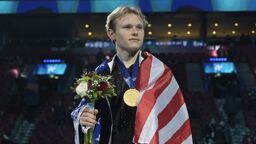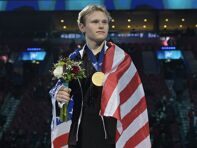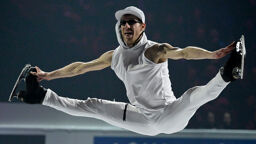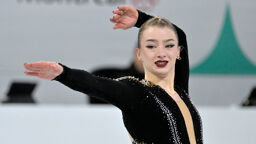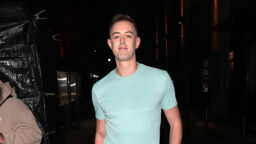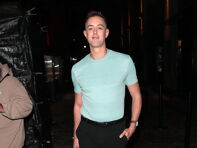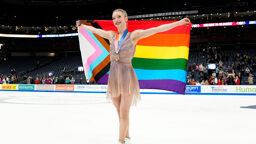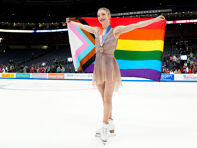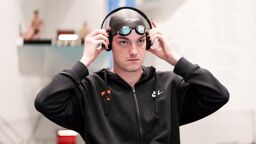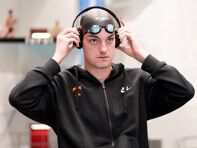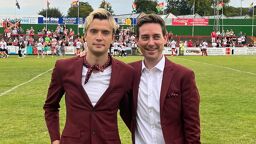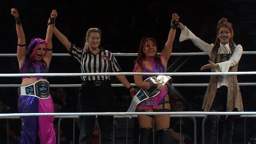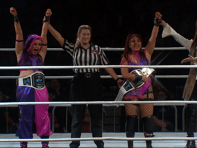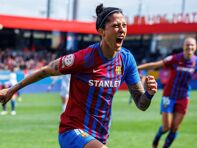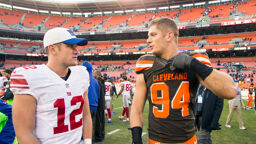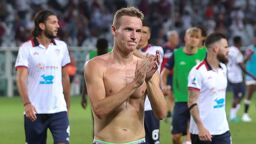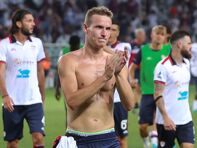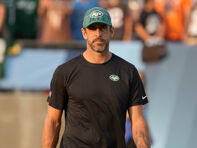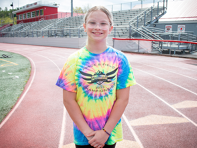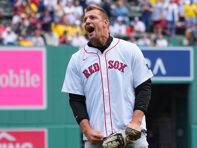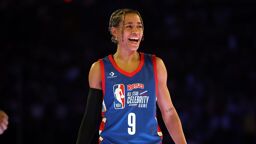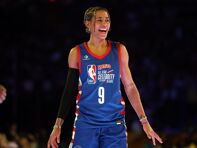When the Winter Olympics figure skating competition starts in Beijing, there will be a record eight out gay men in either singles, pairs or dance. The number was zero in 2014 and three in 2018.
This increase is due to the greater level of acceptance in society and sports, according to skaters who have come out, with social media being a big driver.
For example, Italian pairs skater Filippo Ambrosini never had a public coming out moment, but his Instagram account has numerous photos of him and his male partner, making it seemingly obvious that he is LGBTQ. Outsports wrote Ambrosini and he said, “Yes, I identify as gay and I’m out.”
The same goes for ice dancer Guillaume Cizeron of France, who came out in 2020 by posting a photo of him and his boyfriend, then wondered what all the fuss was about.
“I would not consider myself in the closet before posting this [photo], so I don’t really consider it coming out,” Cizeron said.
“Even though I have never spoken publicly about my sexual orientation, I am one of those who think that it is not something that [people] should have to do. Straight people don’t come out. … I still hesitated a bit before publishing. Because I’m not in the habit of revealing really intimate things. I don’t know what got into me, I said to myself, ‘What do I have to lose?’”
I asked Chad Conley, a Canadian junior nationals silver medalist who now coaches and is gay, what accounts for the increase in the number of out male skaters.
“I do not think there is a change in the numbers of gay men in figure skating,” he said. “In fact, I find there are more straight males finding success in figure skating.”
One financial reason skaters feel more open about coming out is the chance to make money on tour, Conley said, as opposed to being blackballed.
“What is easier than it was even 15 years ago is that skaters who are open about their sexual orientation are now able to get postseason contracts with ‘Stars on Ice’ and more commercial sponsorships,” he said. “This is considered a recent evolution.”
When American singles skater Jason Brown came out in Pride Month last June, he talked about the diversity he experienced in skating.
“I’ve grown up surrounded by beautiful, creative, strong, proud, successful and supportive LGBTQ+ role models,” Brown said on Instagram. “Whether it be family members, coaches, skaters, teachers, friends or others I’ve had the privilege of crossing paths with, my perception of what’s it like to be LGBTQ+ was far from one-dimensional.
“I’ve always found it impossible and truthfully dangerous to paint or stereotype any one group with a singular brushstroke. The diversity of people I’ve met along my journey has shown me that everyone is so individually themselves. No experience or personality is the same, simply people finding their identity, their voice and owning their truths and their own unique ways.”
Despite the record number of out male skaters, there are still issues, especially with coaches and judges from the former Soviet Union, where skating — and homophobia — has a long tradition.
In October, Alexander Vedenin, a former international judge, said that because Cizeron is gay, he was “cold” in his performances with his ice dance partner Gabriella Papadakis. “The French skate with class, but are cold,” Vedenin said. “The partner [Cizeron] does not have a traditional orientation and he cannot hide it.”

Cizeron responded to Vedenin’s comments, calling them “a pathetic attempt to harm us.”
“Don’t let ignorant people tell you how much of a man or a woman you are,” Cizeron said on Instagram. “What makes you a man, a woman, a non-binary or anything in between, has nothing to do with your sexual orientation, and even less with your abilities, your value, your skills, or the level or respect that you deserve.”
In addition, 1994 Olympic silver medalist Alexander Zhulin of Russia insulted Timothy LeDuc, an American pairs skater who is non-binary, and then refused to apologize.
LeDuc has been amazing in telling their historic story to inspire others, but the concern is that there could be homophobic judges who share the disgusting views of those two Russians. Cizeron and Papadakis won the silver at the 2018 Winter Games in South Korea and have won first at the worlds, so they are serious gold medal contenders.
“Until proper sanctions are put in place when comments from regulated officials — coaches and judges — make disrespectful comments, then our sport will not be completely safe,” Conley said.
There is one ares in skating where there will be zero LGBTQ representation on the ice — women. American Amber Glenn, who identifies as pansexual and bisexual, is a reserve on the team, but is not in Beijing. Conley said he has no theory why there are so few women, but that people like Glenn, Kaitlyn Weaver of Canada, Karina Manta of the U.S. and Japan’s Fumie Suguri are trailblazers.
“Why are there no queer women?” Weaver asked when she came out last year. “What’s the reason? That’s why I feel it’s my job to ask why we don’t feel safe. Why can’t you be one and the other? It’s our job to look critically at our sport and say what groups of people aren’t represented here.”
Here are the out gay male skaters in Beijing:
SINGLES
Kevin Aymoz (France)
Jason Brown (USA)
PAIRS
Filippo Ambrosini (Italy), skates with Rebecca Ghilardi
Eric Radford (Canada), skates with Vanessa James
DANCE
Guillaume Cizeron (France), skates with Gabriella Papadakis
Lewis Gibson (Great Britain), skates with Lilah Fear
Paul Poirier (Canada), skates with Piper Gilles
Simon Proulx Sénécal (Armenia), skates with Tina Garabedian
(Pairs skater Timothy LeDuc of the U.S. is non-binary).



